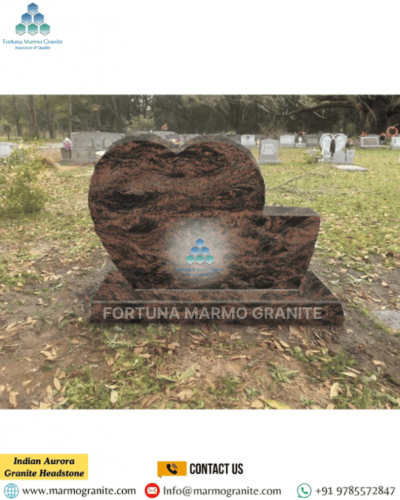How to Clean Mold Off Granite Headstones: A Step-by-Step Guide to Restore Their Beauty
Graveyards are sacred spaces, and each granite headstone tells a story while honoring a life once lived. Although granite is durable and weather-resistant, it can develop mold, mildew, or lichen, especially in damp or shaded areas. These stains affect the stone's appearance and may obscure names, dates, and photos. Seeing a loved one's memorial darkened by green or black patches can be upsetting, but the damage is not permanent.
Moreover, With proper care, you can safely clean the headstone and restore its dignity. Start by rinsing the stone gently with clean water. Use a soft brush and a non-acidic, granite-safe cleaner—avoid bleach or harsh chemicals. In addition, Scrub in circular motions, then rinse thoroughly. Finally, dry the surface completely with a soft cloth. This gentle method protects the granite while honoring the memory it preserves.
Understanding the Enemy: What is Mold on a Headstone?
- Mold and Mildew: Fungi that thrive in damp, shaded areas. They appear as black, green, or white fuzzy patches.
- Algae: Simple photosynthetic organisms that form green, slimy films, especially in humid conditions.
- Lichen: A symbiotic organism of fungus and algae. Lichens come in gray, green, or orange and may appear crusty, leafy, or hair-like, often sticking tightly to the stone.
Why is Cleaning Important?
Beyond aesthetics, there are several reasons why regularly cleaning a headstone is crucial:
- Preservation: Mold, algae, and lichen can, over extended periods, contribute to the degradation of the stone by trapping moisture and acidic byproducts of their growth.
- Legibility: Heavy growth can obscure names, dates, and epitaphs, making it difficult to read and appreciate the memorial.
- Respect and Honor: A clean and well-maintained headstone is a sign of respect and continued remembrance for the person it commemorates.
Essential Tools and Materials for the Job
- Buckets: At least two—one for clean water, one for rinsing.
- Soft-bristle brush: Natural or soft nylon bristles; avoid wire or abrasive brushes.
- Plastic or wooden scraper (optional): For gently removing thick moss or lichen; avoid metal.
- Garden hose or spray bottle: For rinsing; extra buckets of water if needed.
- Clean cloths or sponges: For wiping the stone dry.
Non-ionic or specialized headstone cleaner: Essential for safe cleaning. Avoid bleach, ammonia, vinegar, or harsh detergents. Use pH-neutral, non-ionic solutions made for natural stone, such as D/2 Biological Solution.
Gloves: Protect your hands from cleaning chemicals.
Safety glasses: Protect your eyes.
Old towels or drop cloths (optional): Shield surrounding grass or graves from spills.
Kneeling pad or small stool: For comfort while cleaning.
The Step-by-Step Cleaning Process
Step 1: Assess the Headstone and Prepare the Area
Before you start scrubbing, take a moment to assess the headstone's condition. Note the type and extent of growth. Are there any cracks or damage that need to be handled with extra care?
- Clear the Area: Gently remove any loose debris, leaves, or twigs from around the headstone.
- Test a Small, Inconspicuous Area: This is an absolutely critical step, especially if you're using a new cleaner or are unsure about the stone's exact composition. Apply a small amount of your chosen cleaner to a hidden spot (e.g., the back or bottom edge of the headstone). Wait for 15-20 minutes, then rinse. Check for any discoloration, etching, or adverse reactions before proceeding to the main cleaning.
Step 2: Rinse the Headstone with Water
Before applying any cleaning solution, it's important to begin by rinsing the granite headstone thoroughly with clean water. This preliminary rinse plays a vital role in loosening surface dirt, dust, pollen, bird droppings, or other debris that may have settled on the stone over time. Using a garden hose with a gentle stream or a large spray bottle filled with water, ensure that the entire surface—front, back, sides, and base—is completely soaked. This saturation not only starts the cleaning process but also helps protect the stone from absorbing the cleaning agent too quickly, which can sometimes lead to staining or uneven application. It is critical to avoid using high-pressure washers, as the intense force of the water can chip or crack the granite, especially if the headstone has aged or features delicate carvings or engravings.
Step 3: Apply the Cleaning Solution
Follow the instructions on your chosen headstone cleaner carefully.
- For D/2 Biological Solution (or similar): You can often apply it directly to the wet surface. For tougher growth, some products recommend applying it neat, while for lighter cleaning, it can be diluted. Apply generously, ensuring good coverage over all areas with mold, algae, or lichen.
- For Other Non-Ionic Cleaners: Mix the solution according to the manufacturer's instructions in a clean bucket.
Allow the cleaner to dwell on the surface for the recommended time. This "dwell time" is crucial as it allows the solution to penetrate and break down the biological growth.
Step 4: Gentle Scrubbing
Once the cleaning solution has had time to work, it's time for some gentle agitation.
- Using your soft-bristle brush, gently scrub the entire surface of the headstone. Pay particular attention to areas with heavy mold or lichen.
- For lichen: If lichen is particularly stubborn, you may need to gently scrape it with a plastic or wooden scraper after the cleaner has softened it. Be extremely careful not to scratch the granite. You might also consider reapplying the cleaner to these areas and letting it sit longer.
Avoid aggressive scrubbing, as this can still damage the stone, even if using a soft brush. Let the cleaner do most of the work.
Step 5: Rinse Thoroughly
Once the scrubbing is complete and all visible mold, mildew, or grime has been lifted, it's essential to thoroughly rinse the granite headstone with clean, fresh water. This step is not just about aesthetics—it plays a crucial role in preserving the integrity of the stone and preventing any long-term damage. Begin by using a gentle stream from a hose or a bucket of clean water to flush away every trace of the cleaning solution, dirt, and loosened biological growth. Be sure to cover the entire surface, including crevices, engraved lettering, and edges where residue might linger unnoticed. Any leftover cleaner—especially if it's chemical-based—can cause discoloration or etching on the granite over time. In cases where a biological cleaner is used, which is formulated to continue working after application, only a light rinse might be needed to remove surface grime while allowing the active ingredients to remain and prevent future growth.
Step 6: Inspect and Repeat (If Necessary)
Once the headstone is rinsed, inspect it carefully.
- Immediate Results: You should see a significant improvement, with much of the mold and algae gone.
- Stubborn Stains/Growth: For very old, deeply embedded mold or tenacious lichen, you may need to repeat the application of the cleaning solution and the scrubbing process. Some biological cleaners continue to work over time, with the full results appearing after several weeks or even months as rain and natural processes complete the cleaning. Be patient!
Important Considerations and Tips
- Choose the Right Day:
Clean on a cool, overcast day. Avoid hot sunny days (which dry cleaning agents too quickly) or freezing weather, which can affect water and cleaning performance. - Work Gently:
Granite is strong but not indestructible. Use soft brushes and gentle pressure—never scrub aggressively or use metal tools. - Be Patient:
Biological stains like mold or lichen may take time to lift. Let the cleaner work and don't expect perfect results immediately—repeat the process if needed. - Avoid Harsh Chemicals:
Never use bleach, vinegar, ammonia, or acidic cleaners. These can stain, dull, or damage granite over time. Always use a cleaner specifically made for natural stone or memorials. - Skip High-Pressure Washing:
Power washers can chip the stone, erode details, or loosen joints. Stick to low-pressure, controlled cleaning methods. - Call a Professional if Needed:
For very old, fragile, or heavily soiled headstones, it's best to consult a monument cleaning expert to avoid unintentional damage. - Maintain Regularly:
After cleaning, inspect the headstone once or twice a year. A simple rinse and mild cleaner can help prevent mold or lichen from returning.
Conclusion
In conclusion, Maintaining the beauty and integrity of granite headstones is not only an act of preservation but also a gesture of lasting respect for the memories they represent. Mold, with its unsightly appearance and potential to degrade the surface over time, should never be ignored. By following a step-by-step cleaning process using soft brushes, pH-neutral cleaners, and proper rinsing techniques, you can effectively remove mold without damaging the granite's polished or honed finish. Consequently How to Clean Mold Off Granite Headstones It is equally important to carry out routine inspections and gentle maintenance to prevent future growth, especially in damp or shaded environments. These efforts help safeguard the natural brilliance and structural strength of granite for generations to come.
Moreover, How to Clean Mold Off Granite Headstones Indian Granite Headstones Manufacturer & Supplier At Fortuna Marmo Granite, we recognize the emotional and historical significance that every granite headstone holds. With our deep expertise in natural stone manufacturing and finishing, we not only supply premium-quality Indian granite for monuments but also provide professional guidance to help you care for them with confidence and respect. How to Clean Mold Off Granite Headstones Our mission goes beyond stone — it's about preserving legacies with craftsmanship and compassion. Whether you are restoring an old monument or installing a new tribute, trust Indian Granite Supplier Fortuna Marmo Granite to support you every step of the way with quality products and expert insight, ensuring the memories engraved in stone remain as timeless and beautiful as the day they were made.



